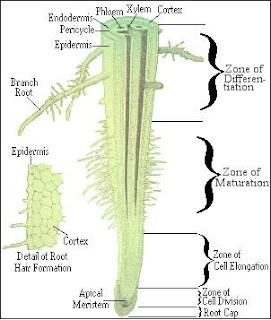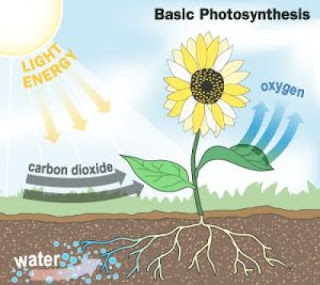Buaya muara atau buaya bekatak (Crocodylus porosus) adalah sejenis buaya yang terutama hidup di sungai-sungai dan di laut dekat muara. Daerah penyebarannya dapat ditemukan di seluruh perairan Indonesia. Moncong spesies ini cukup lebar dan tidak punya sisik lebar pada tengkuknya. Sedang panjang tubuh termasuk ekor bisa mencapai 12 meter seperti yang pernah ditemukan di Sangatta, Kalimantan Timur.
Buaya muara dikenal sebagai buaya terbesar di dunia, jauh lebih besar dari Buaya Nil (Crocodylus niloticus) dan Alligator Amerika (Alligator mississipiensis). Penyebarannya pun juga "terluas" di dunia; buaya muara memiliki wilayah perantauan mulai dari perairan Teluk Benggala (Sri Lanka, Bangladesh, India) hingga perairan Polinesia (Kepulauan Fiji dan Vanuatu). Sedangkan habitat favorit untuk mereka tentu saja perairan Indonesia dan Australia.
Buaya muara mampu melompat keluar dari air untuk menyerang mangsanya. Bahkan bilamana kedalaman air melebihi panjang tubuhnya, buaya muara mampu melompat serta menerkam secara vertikal mencapai ketinggian yang sama dengan panjang tubuhnya. Buaya muara menyukai air payau/asin, oleh sebab itu pula bangsa Australia menamakannya saltwater crocodile (buaya air asin).Selain terbesar dan terpanjang, Buaya Muara terkenal juga sebagai Jenis buaya terganas di dunia.
Buaya muara adalah reptil unik di dunia, dan menggunakan sistem darah mereka untuk menghapus garam dari badan. Kelenjar di bagian belakang lidah mereka berair mengeluarkan kelebihan garam apabila hewan yang hidup di lingkungan yang sangat asin.
Buaya muara juga merupakan salah satu dari sedikit reptil yang memiliki empat ruang jantung (seperti manusia) dan memiliki kemampuan untuk memperlambat denyut jantung mereka satu cute setiap tiga puluh detik atau lebih. Buaya tersebut dapat menahan nafas mereka empat sampai enam jam di dalam air. Di alam liar Queensland Australia, satu buaya telah diamati dapat menyelam dan menahan nafasnya dalam air selama tiga jam dan sepuluh menit. Buaya muara memiliki tiga pelindung yang jelas di kelopak mata disebut selaput nictitating. Hal ini memungkinkan mereka untuk melihat sambil berenang. Berenang sambil melihat adalah "gaya buaya ". Panjang ekor buaya muara adalah 49,5% dari total panjang tubuhnya, terpanjang dari semua jenis buaya.
Crocodiles (Crocodylus porosus)
Bekatak estuarine crocodile or crocodile (Crocodylus porosus) is a type of crocodile that mainly live in the rivers and the sea near the estuary. The endemic area can be found throughout the waters of Indonesia. The snout of this species is quite wide and have no scales wide on the back of his neck. Who's body including the tail length can reach 12 meters as he had been found in the Sangatta, East Kalimantan.
Estuarine crocodile is known as the largest crocodile in the world, much bigger than the Nile crocodile (Crocodylus niloticus) and the American Alligator (Alligator mississipiensis). Its spread was also "the largest" in the world; estuarine crocodiles have overseas territory ranging from the Bay of Bengal waters (Sri Lanka, Bangladesh, India) to waters Polynesia (Fiji Islands and Vanuatu). While the favorite habitat for them, of course, the waters of Indonesia and Australia.
Estuarine crocodiles can jump out of the water to attack prey. Even when the water depth exceeds the length of the body, estuarine crocodiles can jump and vertical jump height to reach the same body length. Estuarine crocodiles like brackish / salty, and therefore also the Australian people call it Crocodile saltwater (saltwater crocodile). In addition to the largest and longest, also known as the Crocodile Estuary Type of the world's crocodiles.
Estuarine crocodile is a reptile unique in the world, and using their blood system to remove salt from the body. Glands at the back of their tongue aqueous remove excess salt when the animals that live in very salty environments.
Estuarine crocodile is also one of the few reptiles that have a four chamber heart (like humans) and has the ability to slow their heart rate a cute every thirty seconds or more. Crocodiles can hold their breath four to six hours in the water. In the wild Queensland in Australia, one crocodile has been observed to dive and hold his breath underwater for three hours and ten minutes. Estuarine crocodile has three protective clear eyelid called a nictitating membrane. This allows them to see while swimming. Swimming while looking at the "crocodile style." Estuarine crocodile tail length is 49.5% of the total body length, the longest of all types of crocodiles.




Comments
Post a Comment
Isi Komentar kamu untuk Posting ini!!